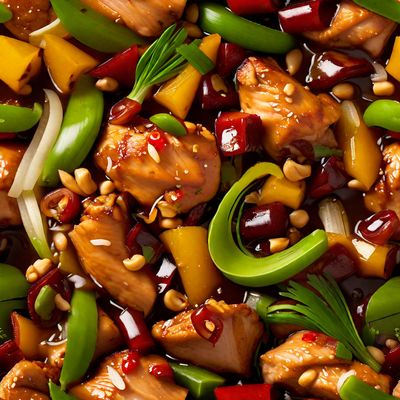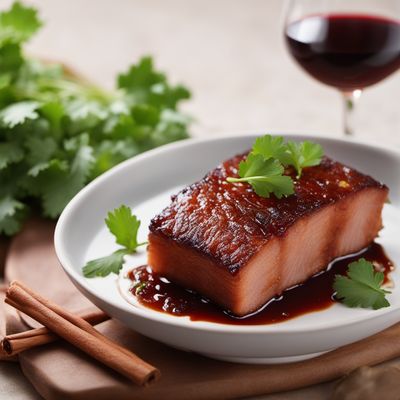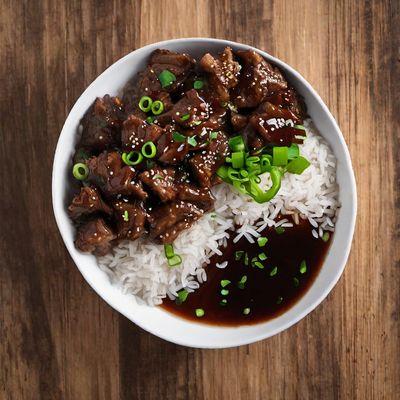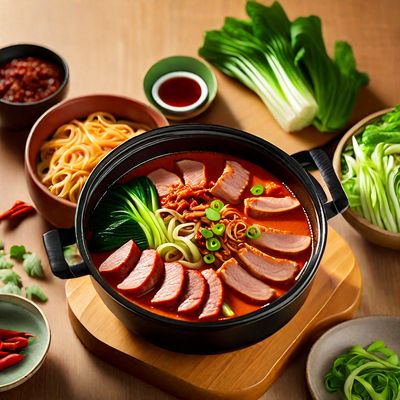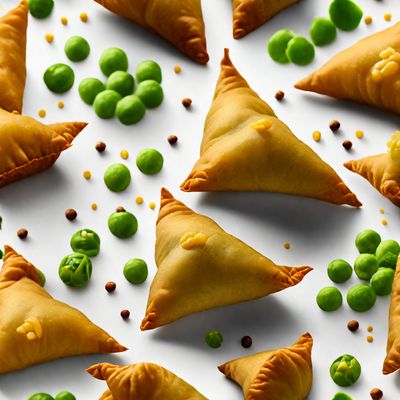
Recipe
Molecular Gastronomy Kung Pao Chicken
Kung Pao Chicken Reimagined: A Molecular Gastronomy Delight
4.8 out of 5
In the realm of molecular gastronomy, we bring you a modern twist on the classic Chinese dish, Kung Pao Chicken. This avant-garde adaptation combines scientific techniques with traditional flavors, resulting in a visually stunning and innovative culinary experience. Get ready to embark on a gastronomic journey like no other!
Metadata
Preparation time
90 minutes
Cooking time
60 minutes
Total time
150 minutes
Yields
4 servings
Preparation difficulty
Medium
Suitable for
Vegetarian (with tofu substitute), Gluten-free, Low-carb, Dairy-free, Paleo
Allergens
Peanuts, Soy
Not suitable for
Vegan, Nut-free, Egg-free, Soy-free, Keto
Ingredients
While the original Kung Pao Chicken is known for its bold flavors and stir-fried technique, this molecular gastronomy version focuses on deconstructing the dish and presenting it in a visually captivating manner. The ingredients are transformed into unique textures and forms, showcasing the artistry of molecular gastronomy. We alse have the original recipe for Kung Pao Chicken, so you can check it out.
-
300g (10.5 oz) chicken breast, sous vide and cubed 300g (10.5 oz) chicken breast, sous vide and cubed
-
50g (1.8 oz) Szechuan peppercorns, infused in oil 50g (1.8 oz) Szechuan peppercorns, infused in oil
-
50g (1.8 oz) roasted peanuts, powdered 50g (1.8 oz) roasted peanuts, powdered
-
30g (1 oz) dried red chilies, ground into powder 30g (1 oz) dried red chilies, ground into powder
-
20g (0.7 oz) ginger, freeze-dried and powdered 20g (0.7 oz) ginger, freeze-dried and powdered
-
20g (0.7 oz) garlic, freeze-dried and powdered 20g (0.7 oz) garlic, freeze-dried and powdered
-
10g (0.4 oz) sugar, caramelized into shards 10g (0.4 oz) sugar, caramelized into shards
-
10g (0.4 oz) scallions, freeze-dried and powdered 10g (0.4 oz) scallions, freeze-dried and powdered
-
5g (0.2 oz) soy sauce, transformed into gel spheres 5g (0.2 oz) soy sauce, transformed into gel spheres
-
5g (0.2 oz) rice vinegar, transformed into pearls 5g (0.2 oz) rice vinegar, transformed into pearls
-
5g (0.2 oz) sesame oil, encapsulated into spheres 5g (0.2 oz) sesame oil, encapsulated into spheres
-
5g (0.2 oz) cornstarch, transformed into crispy flakes 5g (0.2 oz) cornstarch, transformed into crispy flakes
-
5g (0.2 oz) chicken stock, transformed into foam 5g (0.2 oz) chicken stock, transformed into foam
Nutrition
- Calories (kcal / KJ): 350 kcal / 1465 KJ
- Fat: 15g (Saturated Fat: 2g)
- Carbohydrates: 15g (Sugars: 3g)
- Protein: 35g
- Fiber: 3g
- Salt: 2g
Preparation
-
1.Sous vide the chicken breast at 65°C (149°F) for 1 hour, then cube it into bite-sized pieces.
-
2.Infuse the Szechuan peppercorns in oil for 24 hours, then strain the oil.
-
3.Roast the peanuts and grind them into a fine powder.
-
4.Grind the dried red chilies into a powder using a spice grinder.
-
5.Freeze-dry the ginger and garlic, then grind them into powders separately.
-
6.Caramelize the sugar and spread it thinly to create caramelized shards.
-
7.Freeze-dry the scallions and grind them into a powder.
-
8.Transform the soy sauce into gel spheres using sodium alginate and calcium chloride.
-
9.Transform the rice vinegar into pearls using agar-agar and calcium chloride.
-
10.Encapsulate the sesame oil into spheres using reverse spherification.
-
11.Transform the cornstarch into crispy flakes using liquid nitrogen.
-
12.Transform the chicken stock into foam using a whipping siphon.
Treat your ingredients with care...
- Chicken breast — Ensure the chicken breast is properly cooked and tender during the sous vide process.
- Szechuan peppercorns — Use a high-quality oil for infusion to enhance the flavor.
- Dried red chilies — Adjust the amount according to your desired level of spiciness.
- Ginger and garlic — Freeze-drying helps to intensify their flavors.
- Sugar — Be cautious when caramelizing the sugar to avoid burning it.
Tips & Tricks
- Use liquid nitrogen carefully when transforming cornstarch into crispy flakes.
- Experiment with different textures and presentations to create your own molecular gastronomy masterpiece.
- Feel free to adjust the spice level by adding more or less dried red chili powder.
- Serve the dish immediately after preparation to maintain the integrity of the molecular components.
- Have fun and embrace the creativity that molecular gastronomy offers!
Serving advice
Serve the Molecular Gastronomy Kung Pao Chicken on a sleek, minimalist plate to highlight the vibrant colors and unique textures. Garnish with fresh microgreens for an added touch of elegance.
Presentation advice
Arrange the chicken cubes in a circular pattern, placing the gel spheres, pearls, and encapsulated sesame oil spheres in between. Sprinkle the powdered ingredients, caramelized shards, and crispy flakes over the dish for a visually striking presentation.
More recipes...
For Kung Pao Chicken » Browse all
For Chinese cuisine » Browse all
More Chinese cuisine dishes » Browse all

Shark Fin Soup
Shark fin soup is a traditional Chinese soup made with shark fins, chicken broth, and spices. It is a luxurious and expensive dish that is often...

Chow mein
Chow mein is a Chinese dish made with stir-fried noodles, vegetables, and sometimes meat or seafood. It is a popular dish in Chinese cuisine and...

Daoshihe
Daoshihe is a traditional Chinese dish that is popular in the Sichuan province. It is a spicy and sour soup that is made with fish and vegetables.

